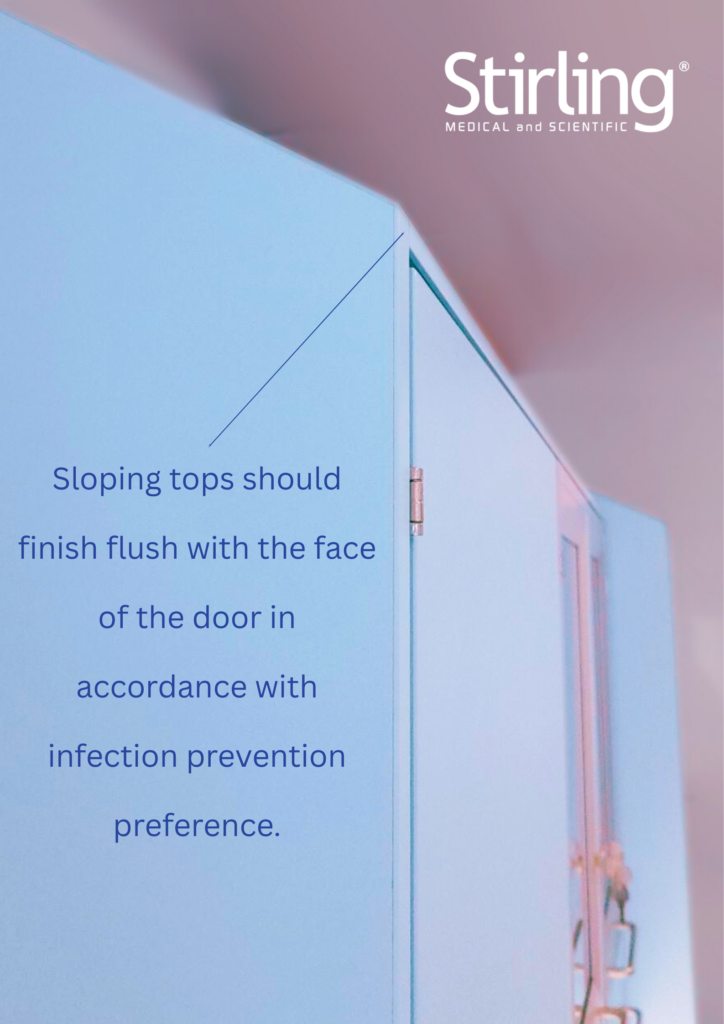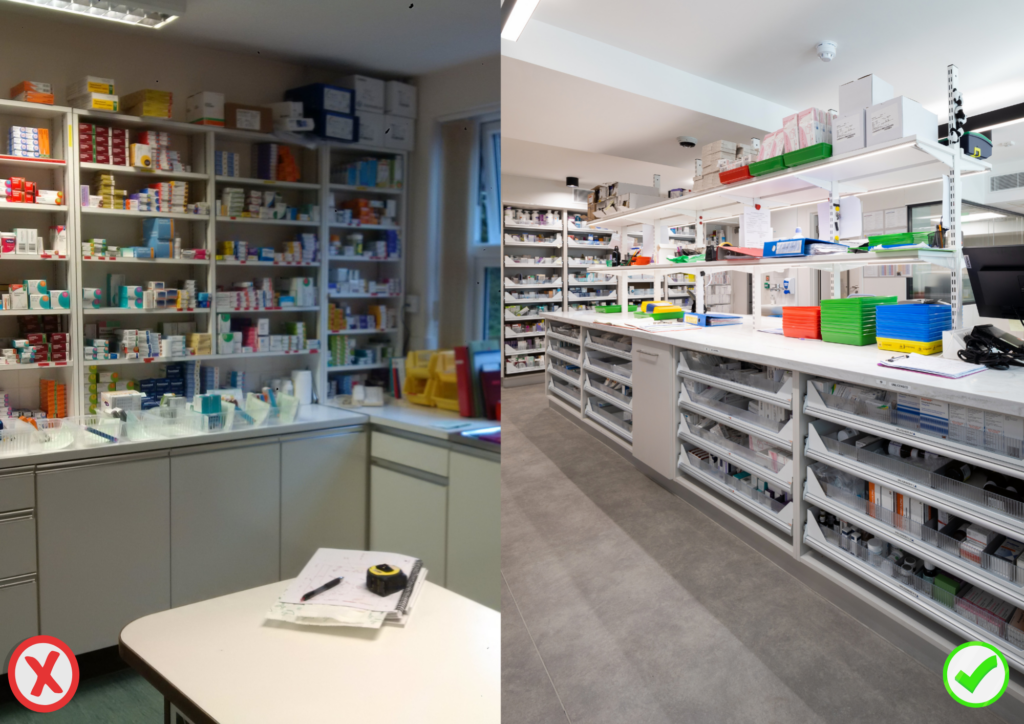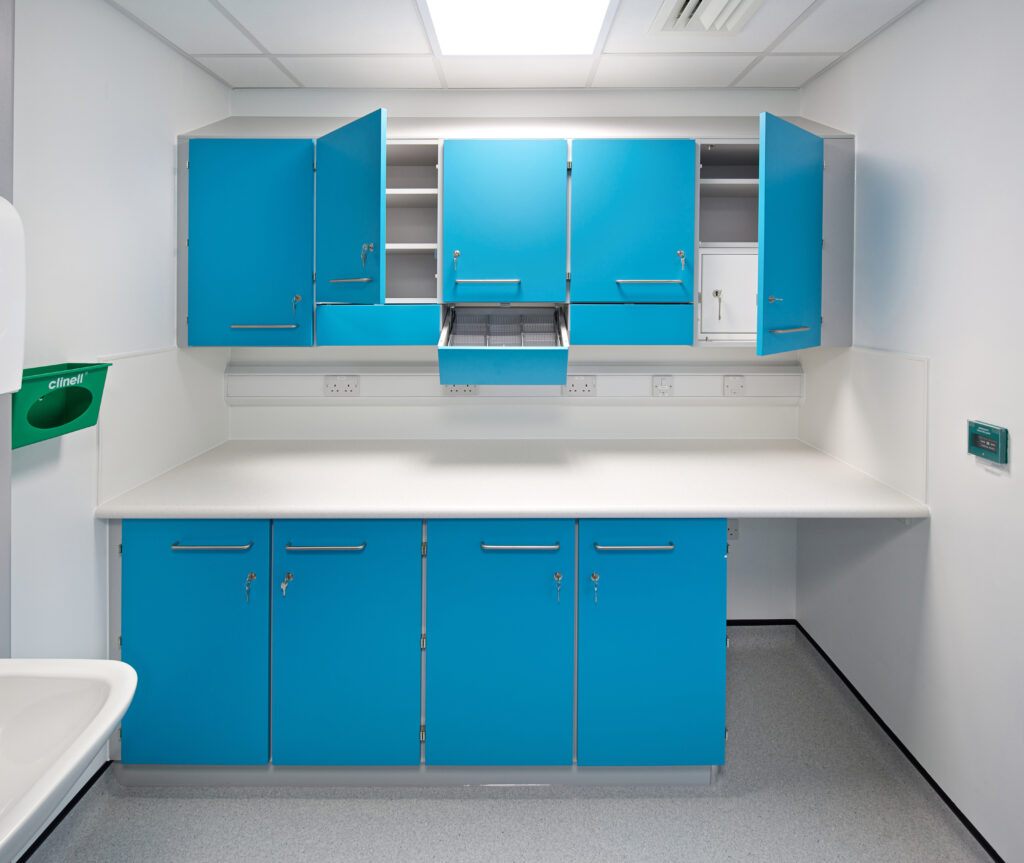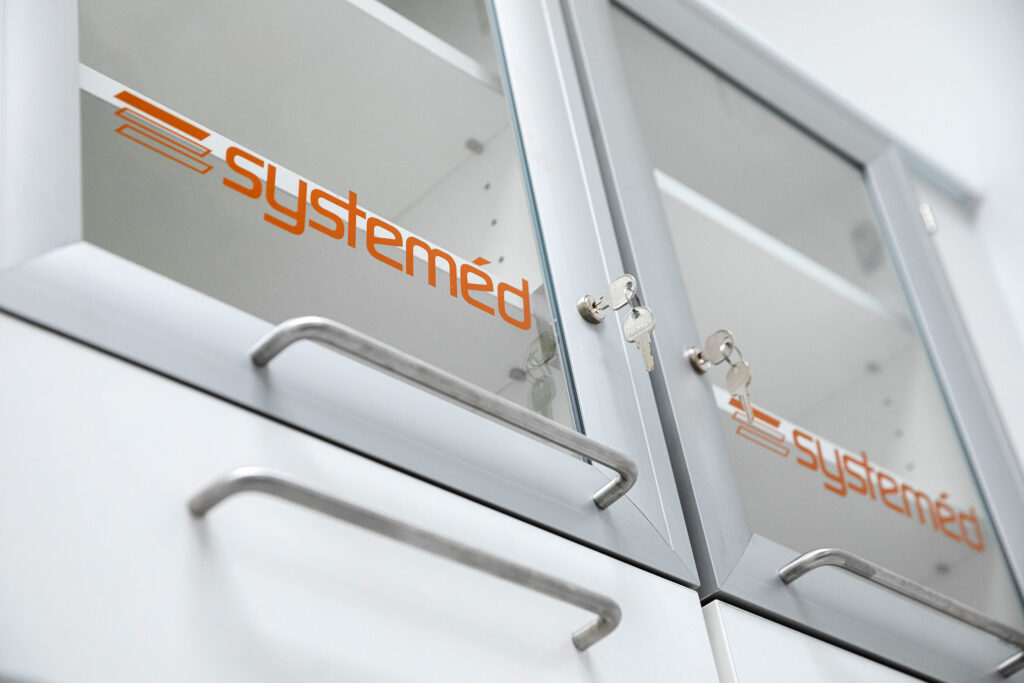Enhancing Infection Control Through Design
Infection control is a top priority in hospitals, and the way clinical spaces are designed can make a big difference in keeping environments clean and safe. When it comes to fighting infectious diseases, one key area where design matters is storage. Incorporating fit-for-purpose solutions plays a pivotal role in minimising contamination risks and enhancing patient safety.
How Smart Choices Improve Infection Control
Utilising specialist cabinets for clinical settings ensures the integration of design and functionality for optimal infection control. A good clinical room design will eliminate the gaps and wasted space often found in traditional designs where dust and pathogens can accumulate. The design will incorporate continuous sloping tops and reduce ledges and areas that are difficult to clean with materials that are durable and suitable for the intended purpose. Fewer ledges also mean fewer interruptions in the surface making cleaning both easier and more efficient.

Sloping Tops and boxing to ceilings
Flat surfaces, especially on top of cabinets and shelving, are magnets for dust, debris and even misplaced items; all of which pose hygiene risks. Sloped tops reduce this problem by providing an easy to clean surface and discourage the tendency for staff to use this space from placing boxes, equipment, or personal items that are not frequently required on top and which can introduce unwanted pathogens in the area. For rooms with lower ceilings there may not be space for a sloping top and a vertical boxing panel to the ceiling can be used in this situation. Consideration of lighting and ventilation grills needs to be considered when using vertical boxing panels.
Modular Storage Solutions
Clutter is the enemy of infection control. The more equipment and supplies left out in the open or on worksurfaces, the harder it is to thoroughly clean a room; and the more surfaces’ pathogens can settle on. Modular storage systems help keep everything organised and stored correctly. Built-in shelves, pull-out trays, and secure cabinets ensure supplies are kept behind closed doors, reducing unnecessary surface exposure. Organised storage also supports faster access to essential items, reducing the need to touch multiple areas while searching for equipment, a key factor in preventing cross-contamination.

Non-Porous Materials
The materials used in clinical spaces play a big role in infection prevention. Using seamless, non-porous materials is crucial for preventing germs from taking hold in healthcare environments.
Porous surfaces, like untreated wood or damaged laminated surfaces can absorb liquids, creating hidden reservoirs where bacteria, mould, and viruses can thrive. Clinical surfaces must be non-porous to be compliant with infection prevention guidelines and there are different grades of material suitable for the different clinical environments that they will be used in.
Seamless finishes further reduce weak points by eliminating joints or seams that can trap contaminants.
Gaps
Designing furniture with surfaces that meet tightly without gaps is essential in reducing infection risks. Smooth, flat surfaces, free from unnecessary protrusions or grooves, are faster and easier to disinfect compared to traditional furniture with small gaps, joints, and handles where dust and pathogens accumulate. Access panels on IPS units either need to have tight fitting panels or have gaps between that are wide enough to clean properly.

Optimised Cabinet Depths
Standard hospital cabinets are often mismatched in size especially when older designs are mixed with newer fittings. For example, traditional metal drug cabinets are frequently 300mm deep by 800mm or 1000mm high and therefore don’t line through with HTM modular cabinets which are 350mm deep and a different height. This is not only a waste of space but creates awkward gaps between cabinets, leading to hard-to-reach spaces where dust and germs can collect. Thoughtfully designed furniture, like the Systeméd modular range of metal drugs cabinets, eliminates these gaps and cleaning challenges by being the same size as adjoining units.

Effective Infection Control Handles
Large, D-shaped handles with smooth rounded edges are a simple yet effective way to support infection control. Unlike traditional round or recessed handles that trap dirt and germs in grooves, D-shaped handles have a smooth, curved design that’s easy to clean. Their open grip style allows staff to pull doors or drawers using minimal hand contact, even with elbows or gloved hands, reducing the risk of cross-contamination. With fewer crevices and non-porous surfaces, they’re quicker to disinfect and less likely to harbour bacteria, making them a practical, hygienic choice for healthcare environments.


The Impact on NHS Infection Control Compliance
In addition, ensuring environments are designed to maximise infection control also ensures compliance with required standards. Hospitals must adhere to strict infection control guidelines, including those set out by the Health and Social Care Act 2008 and the Care Quality Commission (CQC). Using fitted furniture that meets these standards supports compliance and helps prevent costly breakouts of HCAIs.
According to Health Building Note 14-02, proper design and installation of medicines storage facilities are essential to meet legal, professional and security requirements, thereby ensuring patient safety. It also states that, incorporating infection prevention and control considerations into the design and planning of a healthcare space, helps reduce infections and improves service user safety.
Small design changes can make a big difference in infection control and hospital efficiency. By choosing modular storage that fit together seamlessly, hospitals can create cleaner, safer, and more practical clinical spaces. Small details like choosing glass doors for your cabinets means that product labels can be inside the cabinet and not stuck on the door surface making it easier to keep clean. Better storage means less hassle, more hygiene, and a better environment for both staff and patients.
Talk to us to find out how our specialist clinical ranges, Systeméd, addresses the issues of infection control. Or why not visit our showroom and see first-hand our extensive range of space solutions.